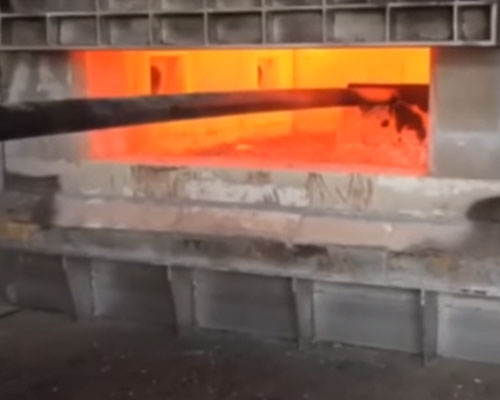In the melting process of aluminum alloy, the furnace temperature is usually higher than 800 ℃, the chemical elements in the aluminum alloy materials will react in different degrees to form impurities or oxides, which will cause the weight loss of the molten alloy. According to the periodic table of chemical elements, the chemical elements arranged in front are easy to react, so the loss rate of each chemical element in the aluminum alloy material during the melting process is also different.
Generally, the burning loss rate of aluminum alloy is 2% ~ 4% in the melting process of aluminum alloy, so refining flux should be added during the melting process to ensure that the chemical elements in the molten aluminum alloy can meet the specified requirements. Usually, the proportion of refining agent added is 10% ~ 15% of the burning loss weight. For example, the refining agent of 8kg ~ 12kg should be put into each refining of 2T central melting furnace to ensure that the chemical composition of molten aluminum meets the requirements.

In the process of die casting, the recycled materials are usually divided into primary and secondary according to the impurity gas content. The so-called primary recycled material refers to the die casting stock handle and unqualified product body, which contains relatively less impurities and air content, and can be directly recycled and melted in die-casting enterprises. The secondary material refers to the exhaust plate and exhaust groove in the die casting, which is mainly used for exhaust and impurity removal in the die casting process. It can not be melted directly in the die casting enterprise, otherwise the quality of liquid aluminum will be seriously affected.
In the actual production process of die-casting enterprises, there will be a lot of overstocking phenomenon of secondary materials in the production process when the ratio of 8:2 is strictly implemented, which will greatly increase the production cost. Therefore, in the actual production process, the enterprise can adjust the proportion ratio through experimental verification, which can ensure the quality of liquid aluminum, but also effectively reduce the production cost and improve the production efficiency. However, the principle is that the proportion of recycled materials should not be higher than 40%. The experiments show that the chemical composition in liquid aluminum can not be effectively guaranteed after more than 40% refining.

